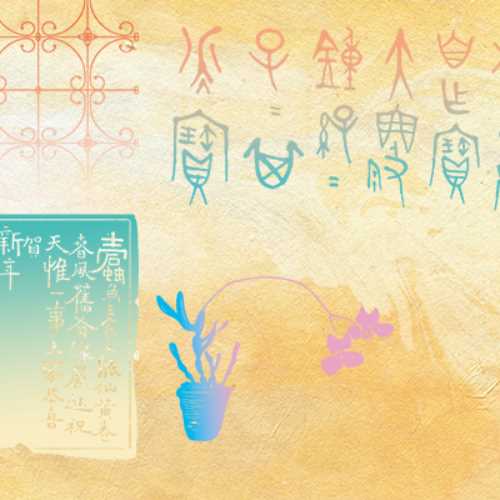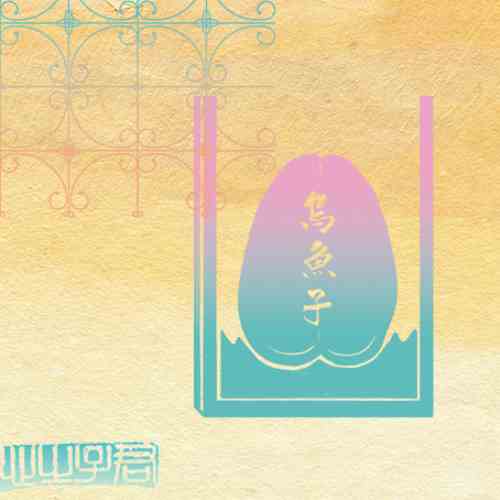The pages of a calligraphy book are like today's notebook; you can keep records of special things or people, or invite your friends and family to leave messages. The notes can be words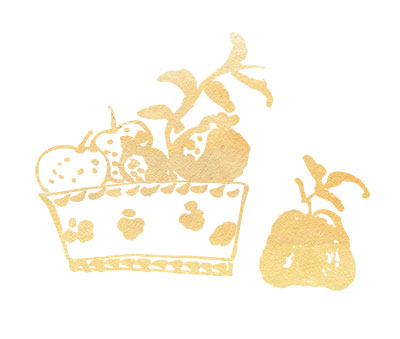 or drawings. This area exhibits Chen Yun-Cheng's ZEN OF CALLIGRAPHY AND PAINTING, Wei Ching-Te's PRECIOUS LITTLE THINGS, and Wu Xin-Rong's CALLIGRAPHY OF NIDANA. All are memorable notebooks containing calligraphic works of past art enthusiasts from the 1930s and 1940s. These are works that surpass simple drawings and words.
or drawings. This area exhibits Chen Yun-Cheng's ZEN OF CALLIGRAPHY AND PAINTING, Wei Ching-Te's PRECIOUS LITTLE THINGS, and Wu Xin-Rong's CALLIGRAPHY OF NIDANA. All are memorable notebooks containing calligraphic works of past art enthusiasts from the 1930s and 1940s. These are works that surpass simple drawings and words.
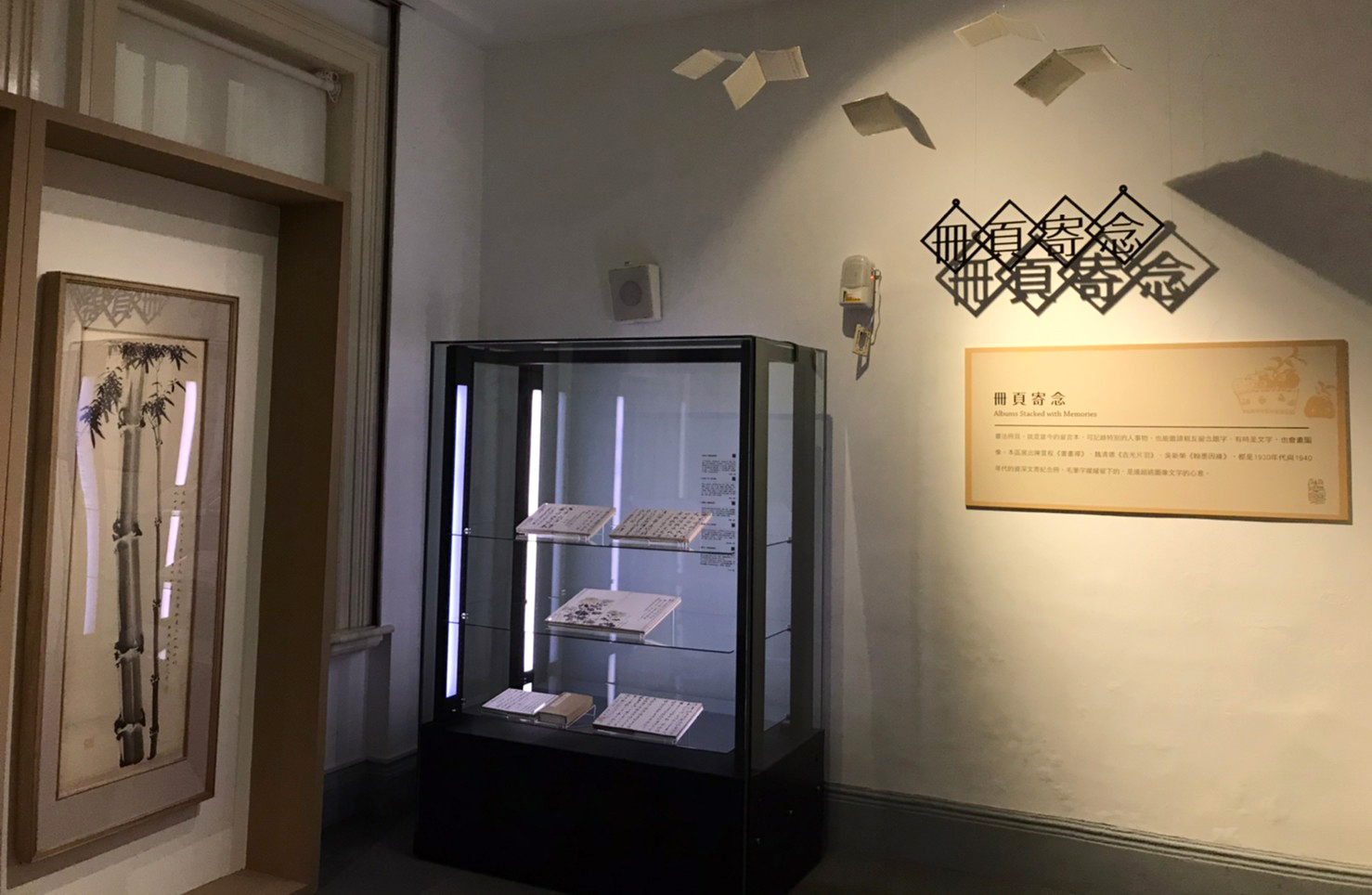
𓇬 𓇬 𓇬
🖌 Wu Huan-Tsau's "Calligraphy Collection"(P.4)
In 1937, The Island-Wide Poets' Conference was held in Taipei. Hsieh Hsueh-Yu and Lin Fo-Guo from the Ying Society wrote this piece for Wu Huan-Tsau. Hsieh Hsueh-Yu's calligraphy works are rare today. This cursive-style work is based on "Guest on Horse from You Prefecture" written during the Northern and Southern dynasties. The work shows proficient skills and unforced talent, as the characters are casual and unrestrained. The second is Lin Fo-Guo's cursive-style seven-character couplet. The characters are filled with strength as if the calligrapher had tried to release all of his emotions. The structure of each character is also intuitive without deliberate arrangement, showing the calligrapher's unique characteristics.(Donated by Wu Nan-Tu)
𓇬 𓇬 𓇬
🖌 Wu Xin-Rong's "A Poetry Anthology"
The owner of this book was Wu Xinrong. Contributors to this book include the following people: Wang Bing-Nan, Guo Shui Tan, Lin Pan, Yu Dafu, Lin Xian-Tang, Yang Zhao-Jia, Lin Mo-Sei, Hatori Ichiki, Loa Ho, Yang Yun-Ping, Ye Tao, Chen Yi-Song, Kumaya Yoshimasa, Fujino Yuuji, Huang De-Shi, Zhang Wen-Huan, Wang Jin-Quan, Wu Yong-Fu, Kokubu Naoichi, Ikeda Toshio, Chen Feng-Yuan, Kanaseki Takeo, Tateishi Tetsuomi, Chen Shao-Sheng, Lu Heu-Ro, and Yang Kui. These were all intellectuals and cultural elites in Taiwan at the time. Their occupations included doctor, lawyer, painter, writer, and scholar.(Donated by Wu Nan-Tu)
𓇬 𓇬 𓇬
🖌 "Zen of Calligraphy and Painting" by Chen Yun-Cheng(P.17)
Zhang Li De-He made this painting based on the traditional topic of "chrysanthemum under the fence" using his proficient freehand painting style. A five-character, four-line poem is attached to the painting. It was made in the summer of 1942. This book also features Zheng Kun-Wu's modest portrait of orchids using "light colors and a boneless style." There is also Lin Yu-Shan's mountain paintings from a horizontal angle and a bottom angle, manifesting tremendous charisma through ink. There are also works from Lin Yu-Shu, Hsu Chieh-Fu, Li Shuo-Qing, and Lin Xian-Tang.(Donated by Chen Yun-Cheng)
𓇬 𓇬 𓇬
🖌 "Precious Little Things" by Wei Ching-Te
Wei Ching-Te was an intellectual during the Japanese Colonial Period. He was a journalist who had much contact with intellectuals and writers. The book reflects the mingling between socially and culturally prominent figures. The book has diverse content and shows different styles, reflecting the liberal atmosphere in the contemporary calligraphic art scene. The book title, PRECIOUS LITTLE THINGS, was written by Suga Houjou. The book features works from Lian Heng, Hong I-Nan, Li Yi-Qiao, Lin Jr-Yi, Chen Zhen, Lin Xiong-Xiang, and Wu Fu.(Donated by Wei Ching-Te's family)
𓇬 𓇬 𓇬
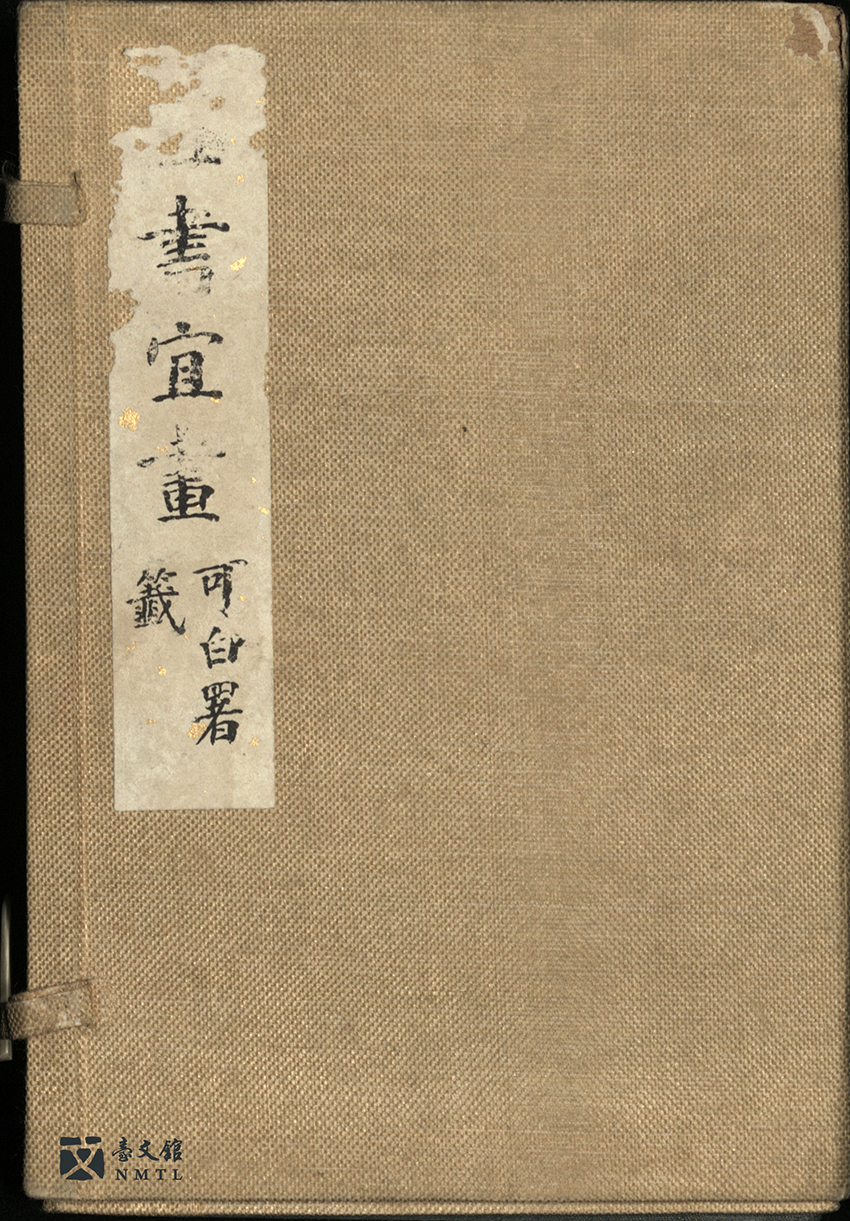
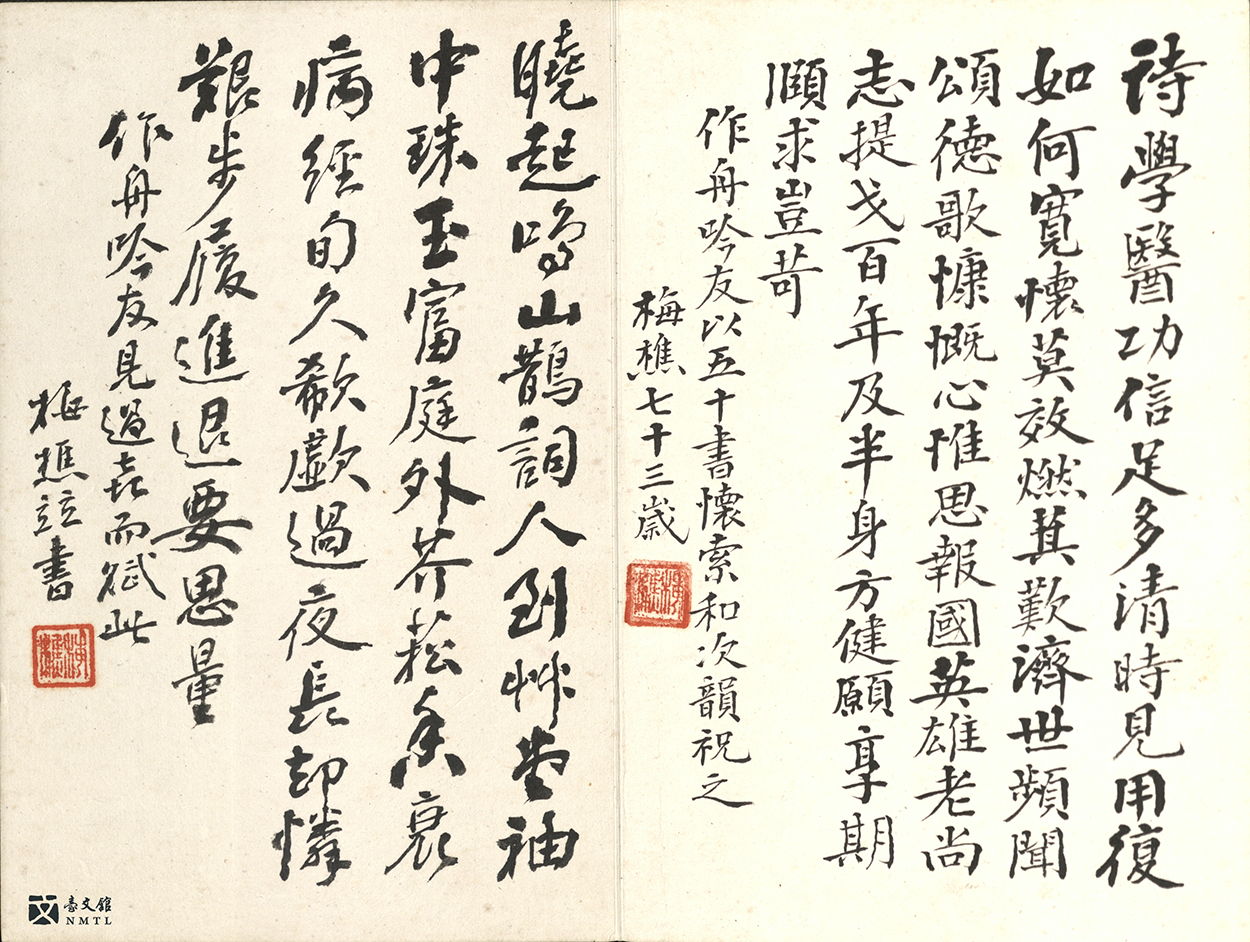
🖌 "Calligraphy and Paintings" Zhan Zuo-Zhou
The first one was written by Shi Mei-Chiao in celebration of Zhan Zuo-Zhou's 50th birthday in 1941. This seven-character, eight-line poem points out Chan's role as a doctor and a poet. The work was written in regular style and has wide and square-like qualities similar to Yan Zhen-Qing's works. The characters also expand horizontally. This proficiently executed work is one of a kind. The second one is an imitation of He Shao-Ji's semi-cursive style. The year when it was made is not indicated. However, judging from the mature and great strength of the work, it was probably written in his old age. The calligrapher wrote the poem in semi-cursive style with the meaning of the poem and calligraphic beauty harmoniously integrated, demonstrating the natural charisma of calligraphy. The strokes are firm and majestic, as they were proficiently written by an experienced calligrapher that wrote with lasting charm. (Donated by Zhan Yuan-Xiong)
𓇬 𓇬 𓇬
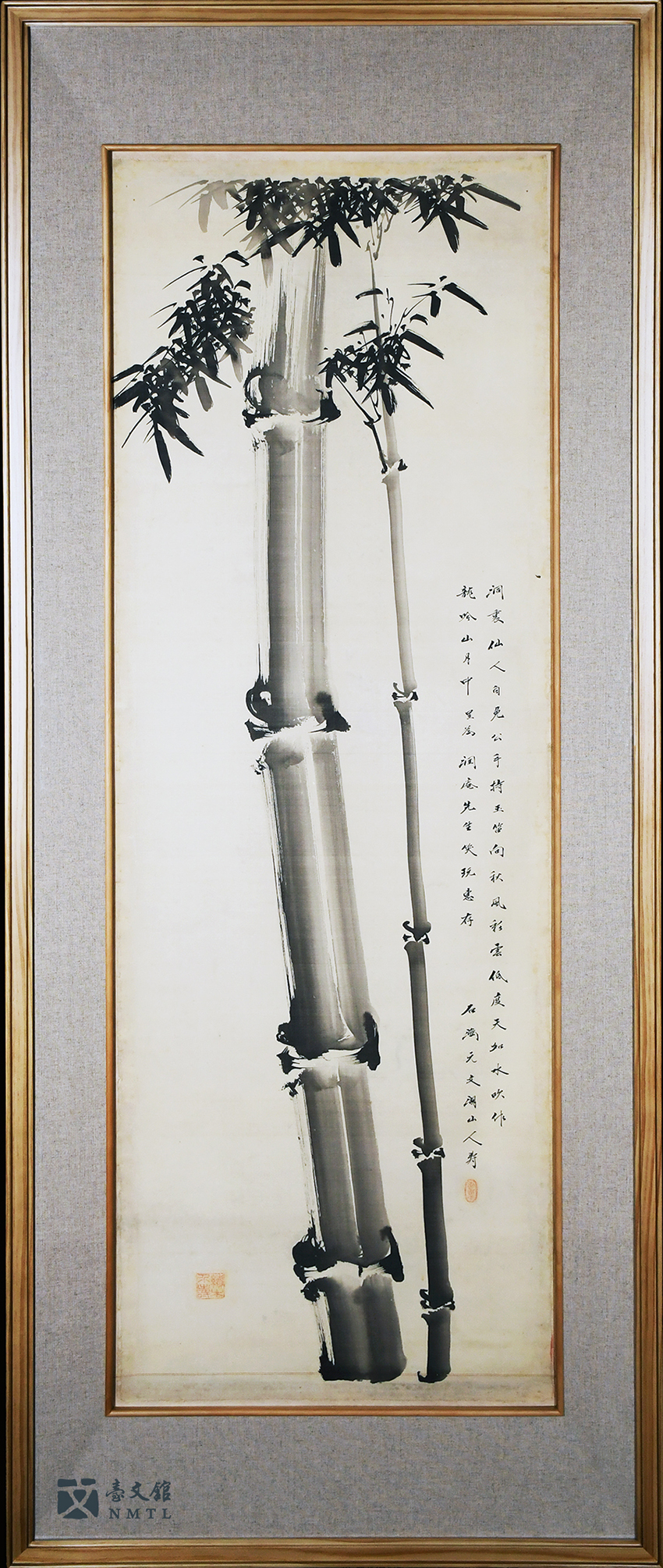
🖌 "Ink Bamboo Painting" by Shi Hong-Yuan
The simple touches that are sometimes heavy and sometimes light are combined with luxuriant bamboo leaves painted with ink of different thickness levels. The round and pronounced bamboo stalks feature only a few strokes, creating a spatial contrast where the top is dense and the bottom is loose. The attached poem is based on "On Bamboos: Two of The Three Poems" by Liu Yong-Zhi from the Yuan Dynasty, and was written here in semi-cursive style. Shi Hong-Yuan came to Taiwan in 1920 and this was painted by him at the time and given to Wei Ching-Te. (Donated by Wei Ching-Te's family)
𓇬 𓇬 𓇬
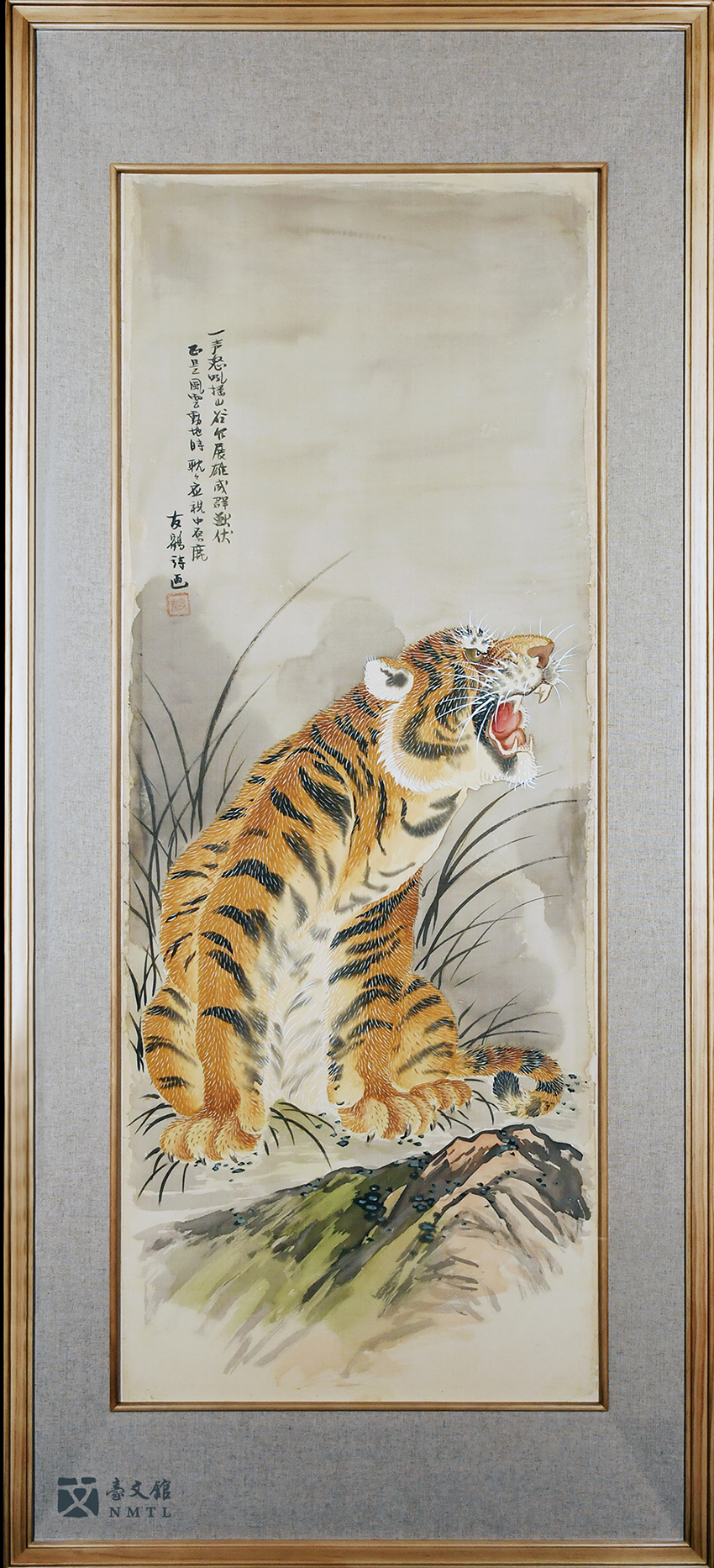
🖌 "Tiger's Roar" by Zheng Kun-Wu
The proud tiger standing on the rock lets out a roar. The top and bottom parts of the painting are left blank. The vivid patterns of the tiger attract the viewer's attention to the center. There are large, blooming strokes around it and tall and long grass, resonating with the title of the painting "Wind and Cloud that Shake the Earth" while taking into consideration the viewer's visual experience. The work was made during the late Japanese Colonial Period or shortly after the war.(Donated by Wei Ching-Te's family)
𓇬 𓇬 𓇬
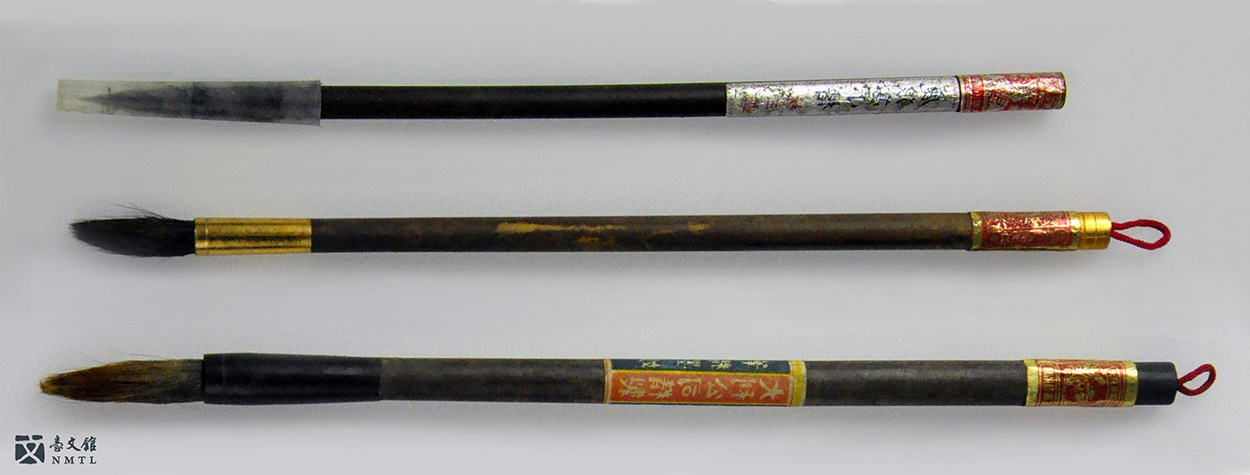
🖌 Calligraphy brushes used by Wang Khai-Yun
(Donated by Wang Jun-Yue)
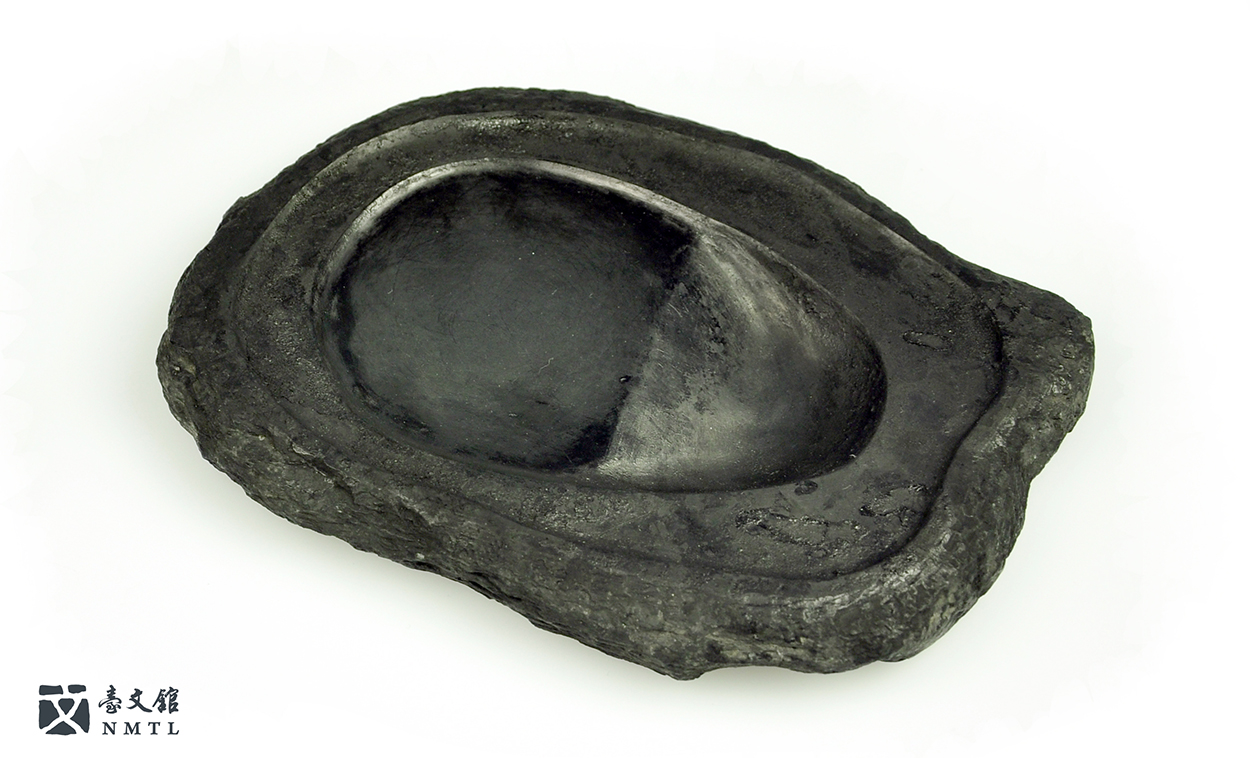
🖌 Inkstone used by Wang Khai-Yun
(Donated by Wang Jun-Yue)
𓇬 𓇬 𓇬
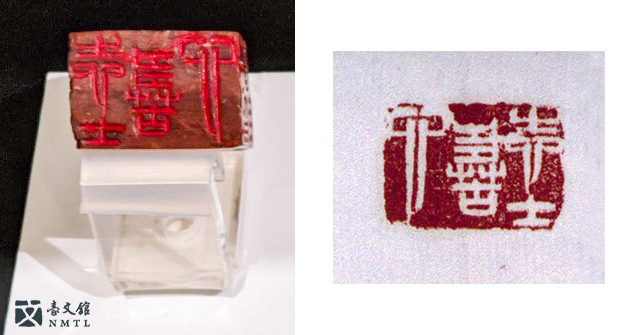
🖌 Chou Ting-Shan's handmade seal ("aspiring people's hardships")
(Donated by Chou Ting-Shan's family)
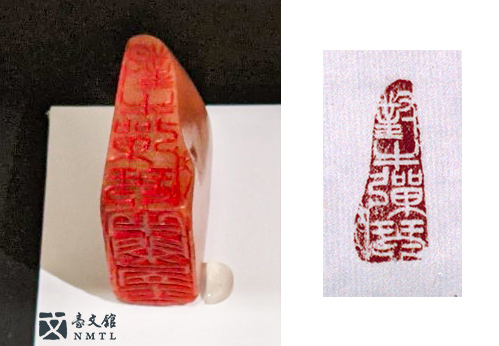
🖌 Chou Ting-Shan's handmade seal ("talking to a wall")
(Donated by Chou Ting-Shan's family)
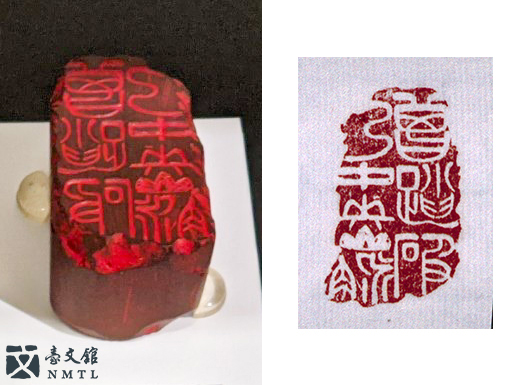
🖌 Chou Ting-Shan's handmade seal (Trekking through the Central Mountain Range)
(Donated by Chou Ting-Shan's family)
𓇬 𓇬 𓇬
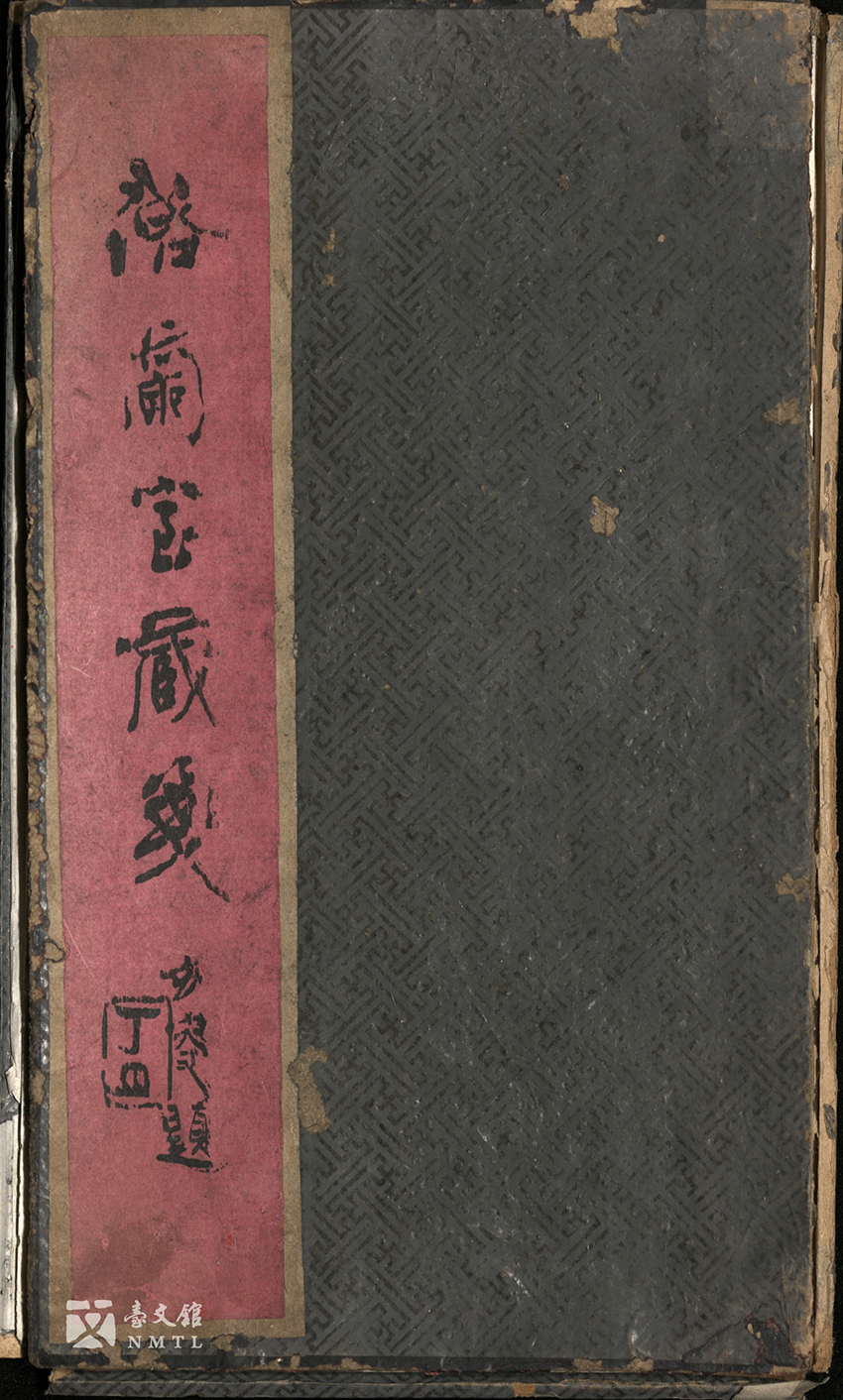
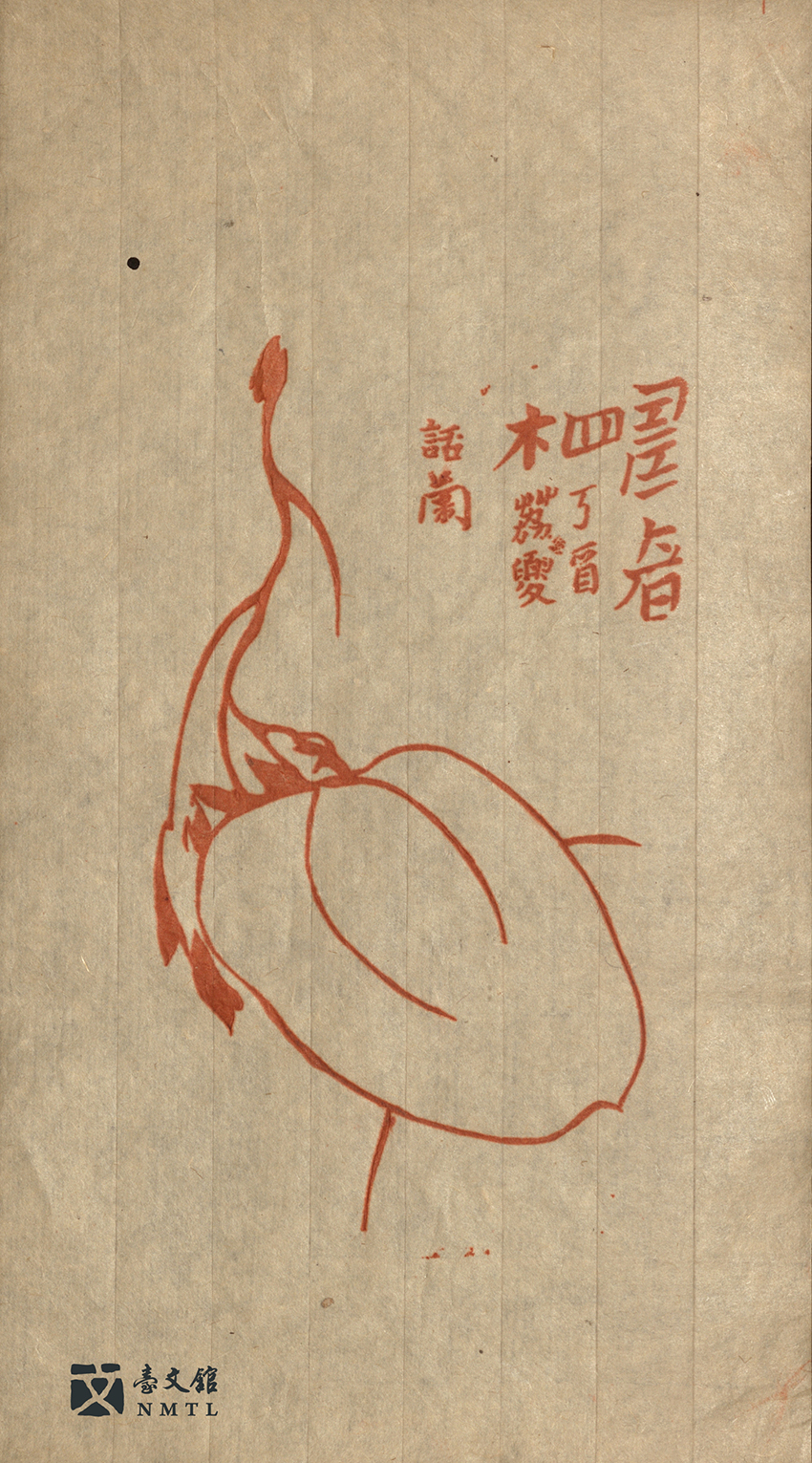
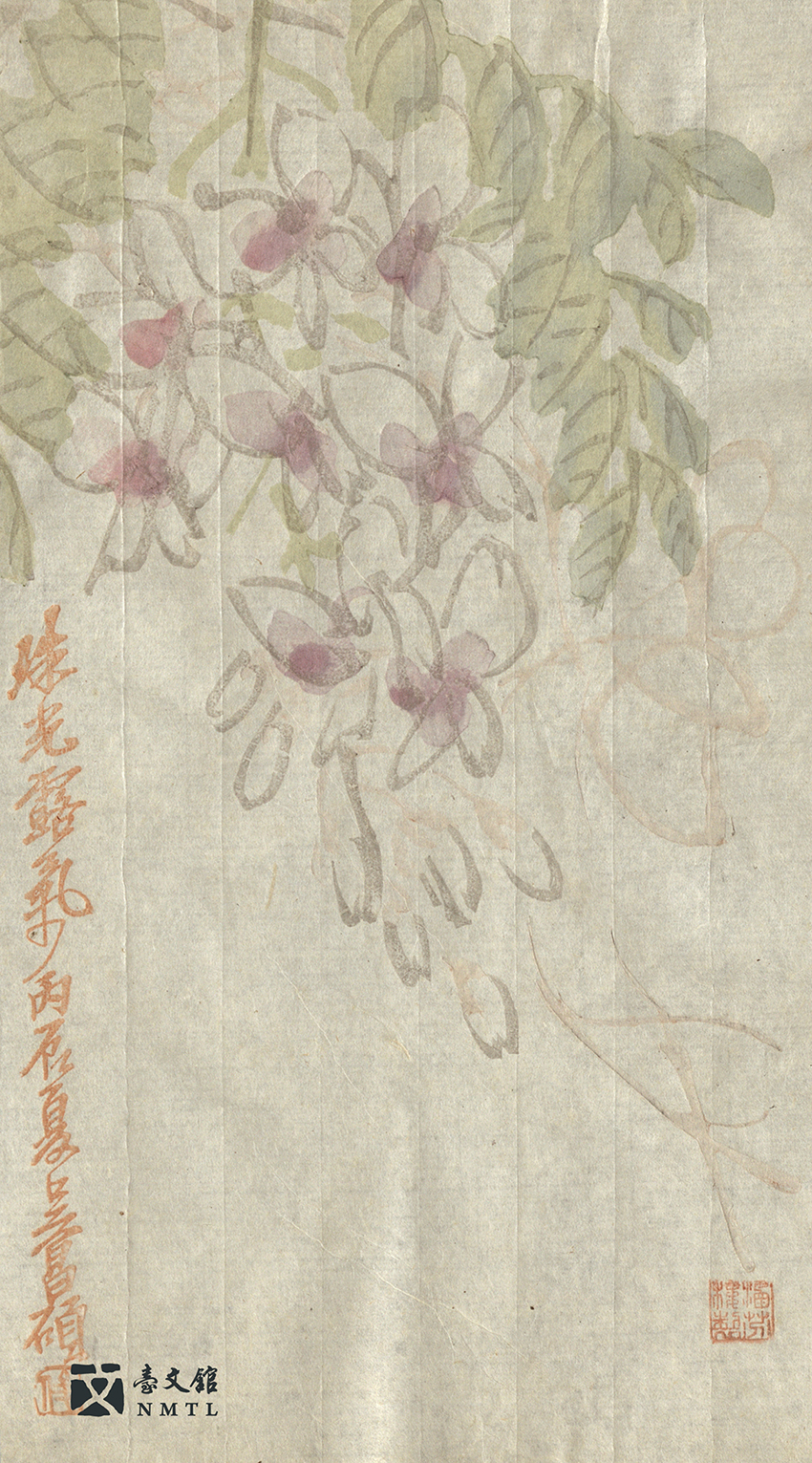
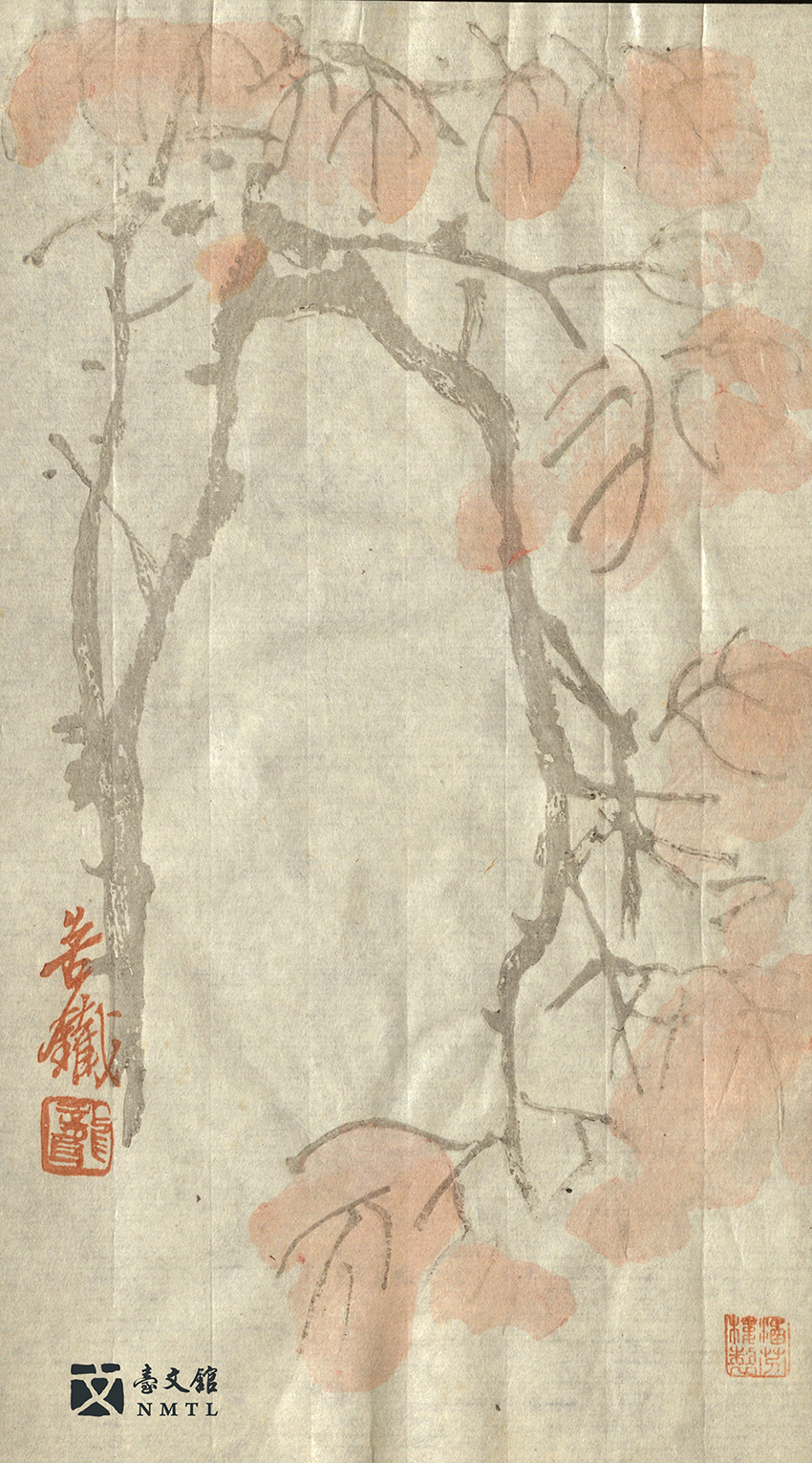
🖌 Orchid Chamber Paper Sheet
Creator—Wei Ching-Te. Paper is one of the four treasures of a cultured person. Depending on individual needs, there are all sorts of derivative products. Orchid Chamber Paper Sheet, made using the woodblock printing method with water, is a traditional woodblock printing technique. In the past, there were a wide variety of topics that could be printed on this type of small paper sheet. All of the words and paintings could be replicated and re-printed, so they were also used to copy poems and letters. Now, it is still loved by art and calligraphy enthusiasts. This sheet was used by Wei Ching-Te after the war.(Donated by Wei Ching-Te's family)

